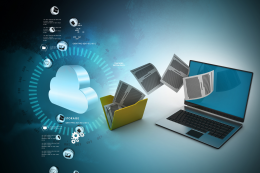
Happy customers remain loyal.
But creating a strong customer experience—also know as CX, the interactions your customers have with a business throughout their entire journey—is imperative for any midsize business. And a good customer experience isn’t just good customer service. Having mature customer support channels (keep in mind that customer service is only one aspect of the entire customer experience) and an engaging journey to match are key elements that midsize businesses have used to separate themselves from competitors.
A business cannot exist without its customers.
And companies need to focus on how to win new business and retain existing customers.
In a recent Forbes article, “3 Ways To Evolve The Customer Experience For Midsize Companies” written by SAP’s Bernard Chung, Global Head of Product Marketing, Commerce Cloud, 3 ways that midsize businesses can evolve their customer experience were highlighted. Since the onset of COVID, many companies, especially smaller to midsized enterprises, have had to re-examine their business models and find new ways to better interact with their customers.
Simply put, digital has become front-and-center.
One key takeaway from the Forbes article is an Oxford Economics study which highlighted the importance of companies making their customers’ experience essential to their offerings, and doing so within the next three years. As per the study, technology and insights are necessary for maintaining a solid customer experience, whether the market is ambiguous and difficult to navigate (consider the current state of affairs as everyone deals with the ramifications of COVID), and future-proofing the business.
In addition, and according to a survey by Bloomberg Businessweek several years ago, it was discovered that “delivering a great customer experience” had become a top strategic objective for business leaders.
Today, convenience plays a significant role in the customer decision-making process—Millennial and Gen-Z customers, especially, are playing by a different set of rules and expectations that are motivated by technology and an on-demand culture. These younger generations have grown up with media and services available at the push of a button, accessible from any where and at any time.
So, with digital commerce considered the most convenient way of purchasing, midsize businesses now more than ever need to anti-up and prioritize digital opportunities.
Personalization Matters
Building loyalty and improving the customer experience means optimizing offers across all customer touchpoints and targeting high-value customers. With the personalization aspect mentioned in Bernard Chung’s article, this isn’t simply about “inserting the customer’s name in the subject line of a promo, the salutation of an e-mail, or on the Web-shop home page”—it’s a wasted opportunity. “Businesses can leverage AI-driven personalization to dynamically create products and offerings based on in-moment context of the engagement. And, they can respond to relevant messages triggered by a customer’s past transactions, browsing history, interests, and past feedback.”
A Holistic Approach to Improve the Customer Experience
In another Forbes article, a more generic measure of customer experience impact that can be applied to all industries was provided: “Companies with a customer experience mindset drive revenue 4%-8% higher than the rest of their industries.” The author also noted companies known for leadership in customer experience tend to outperform competitors by almost 80%. Using customer service data to improve the customer service function is truly holistic, needed to include all areas of a business. With valuable insights, a business will better understand its customers which will eventually create a better experience.
Freedom of Choice
According to Bernard Chung, “Every interaction and transaction serve as indicators of whether a customer will become and remain loyal in the future.” Back in 1953, Baskin-Robbins, now the world’s largest ice cream chain, opened and offered a line-up of 31 flavors—a different choice of flavor per day. More than fifty years ago, this was a huge differentiator, a novelty and a variety previously unheard of. Today, customers expect to see more choice and have grown accustomed to having a lot of choice. And these customers want to buy from anywhere and at any time—at their convenience not restricted to time of day or time zones. By enabling accessible experiences enhanced by digital, technologically enabled businesses, you can further increase engagement.
Your choices? SAP Business ByDesign and SAP Business One. Depending on your industry, specific needs, and budget, there’s a choice for your business, too.
Ready to increase your digital CX investment and improve your customers’ experience?


